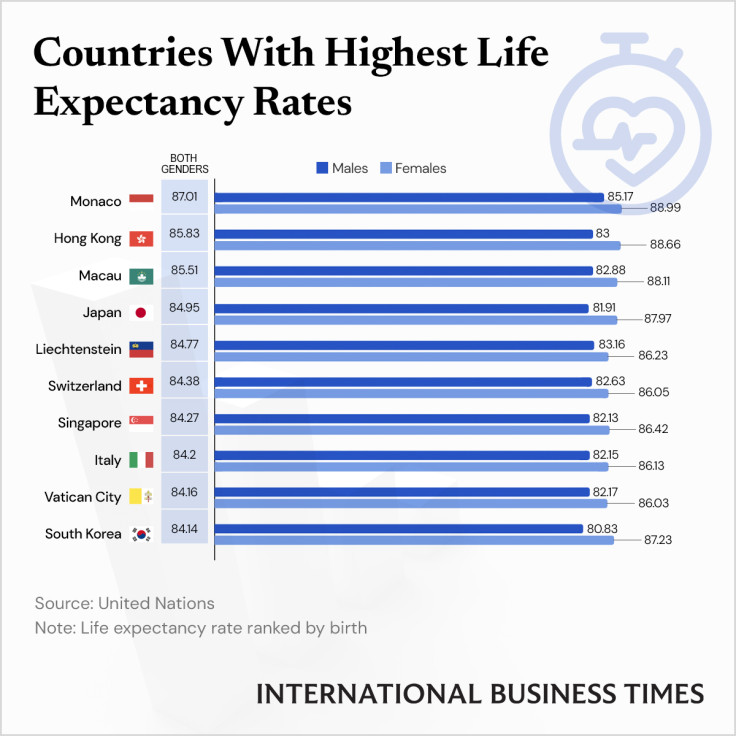Top 10 Countries Where People Live The Longest - IBT Graphics

Life expectancy is a measure of the average years a person is expected to live. Measured by the year of birth and other demographic factors such as sex, life expectancy largely depends on environmental criteria too, including disease, pollution and lifestyle.
It is important to note that life expectancy at birth can be relatively low in less-developed countries compared to developed nations. The average human lifespan has increased to 73.4 years in 2023, compared to 66.8 years in 2000. The global life expectancy at birth was 70.8 years for males and 76.0 years for females, according to the United Nations.
Despite the U.S. having the highest healthcare costs compared to other nations, the life expectancy in the country remains relatively low. Life expectancy in the U.S. has reduced to 76.4, the shortest it's been in nearly two decades, in the aftermath of the COVID-19 pandemic, according to the Centers for Disease Control and Prevention (CDC).
Meanwhile, Monaco has the highest average life expectancy rate at 87.01 years, followed by Hong Kong (85.83) and Macau (85.51), according to the United Nations. The data also shows females have a higher life expectancy at birth compared to males in the top 10 nations.
© Copyright IBTimes 2024. All rights reserved.





















